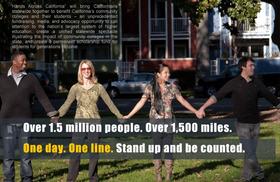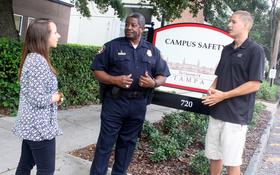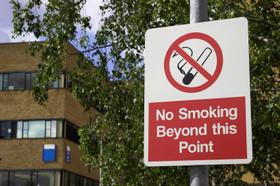Incarcerated individuals are much more likely to return to prison three years after their release if they do not have access to educational opportunities beyond high school, a new study from the Institute of Higher Education Policy has found. In the report titled "Unlocking Potential: Results of a National Survey of Postsecondary Education in State Prisons," IHEP has determined that providing prisoners with access to college education benefits both the individual and society at large. The report was published this month on the IHEP website, including recommendations for policymakers regarding prisoners currently in the system.
According to IHEP, there are approximately 2.3 million people in the prison system in the United States today, costing taxpayers about $52 billion each year. Without access to any postsecondary education, seven of 10 formerly incarcerated individuals will return to prison within three years of their initial release. Recidivism costs states every year, which is why policymakers must consider instituting programs within the prison system to provide prisoners with the necessary training and education to find jobs after their release.
The Profile of a Prisoner
The IHEP study found many common characteristics of incarcerated individuals vs. the general population today, including:
- Incarcerated individuals are much more likely to come from economically disadvantaged backgrounds than the general population
- Those in prison tend to be from racial and ethnic minorities to a higher degree than the population at large
- Many in prison today were either working at low-paying jobs or not working at all when they were arrested
- Incarcerated individuals have less education than those in the general population
The facts uncovered in this study suggest that individuals who end up incarcerated are in much greater need of educational opportunities if they are to become productive members of society after their release. In addition, prisoners who receive the education they need to obtain gainful employment after their incarceration are less likely to become a financial burden on the state. They can even contribute to the economic growth of the area. For this reason, IHEP has offered a series of recommendations for lawmakers to ensure incarcerated individuals get the education they need after release to become successful and productive members of their communities.
The Internet Question
Because the IHEP study also found that distance learning is the most likely method for educating a larger number of incarcerated students, the agency recommends altering the restrictions on prisoners' Internet access. Currently, most prisons do not allow prisoners Internet access, greatly restricting their ability to achieve a distance education.
The co-author of the IHEP study, Dr. Brian Sponsler, told Diverse Education, "Rather than having everybody in the room be on the same program, distance education would provide the opportunity for them to participate in programs they are interested in and prepared for." Sponsler adds that the technology to regulate Internet access is available; prisons haven't accessed it today.
Who Pays?
Another factor influencing lawmakers' decisions regarding educating prisoners is the cost of such education. According to a report in the Chronicle of Higher Education, President Bill Clinton banned prisoners from receiving Pell Grants in 1994. This makes it difficult for incarcerated individuals to afford the cost of higher education while they are still in prison. While some private colleges have partnered with local prisons to provide free access to some coursework, programs are not widespread enough to allow adequate access to incarcerated individuals across the country.
To remedy this situation, IHEP recommends that lawmakers provide access to financial aid for prisoners who are unable to afford their higher education on their own. Sponsler admits this part of the equation will not be easy, telling the Chronicle, "The question about where this lays in the political sphere is a tough one, and we're aware that this is an issue that will be one of many things that states are going to have to wrestle with as they go through budget cycles."
Others Onboard
The IHEP study follows on the heels of a similar survey conducted by the NAACP titled "Misplaced Priorities: Over Incarcerate Under Educate." The study examines the correlation between increased spending on the incarceration system and education. The co-author of that study, Alice Huffman, laments that the focus of the country appears to be more on incarcerating criminals rather than educating individuals before they turn to a life of crime.
"Little money goes to rehabilitation, and most is spent on incarceration operations," Huffman told Diverse Education. Our voice is clear: We want more resources devoted to relevant education so that released prisoners can find a place in society and become economically sufficient in the legitimate market."
Although evidence suggests that educational opportunities lower rates of recidivism across the country, budget woes facing most states could impact their ability to take many of IHEP's recommendations to heart at this time. Sponsler admits that tight budgets could make it awkward for lawmakers to propose advantages to prisoners in public discussion forums. However, he urges states to look at the long-term benefits rather than the short-term expenses.
This video explores prison education, reform, and rehabilitation and the incredible benefits of schooling for convicted criminals.
"In the current budget climate, we look at short-term costs," Sponsler told Diverse Education. "We seem to be a little less concerned with long-term value," Sponsler adds that providing education to incarcerated individuals would offer financial and societal benefits to the general population and the prisoners receiving the training.
Questions? Contact us on Facebook. @communitycollegereview























































